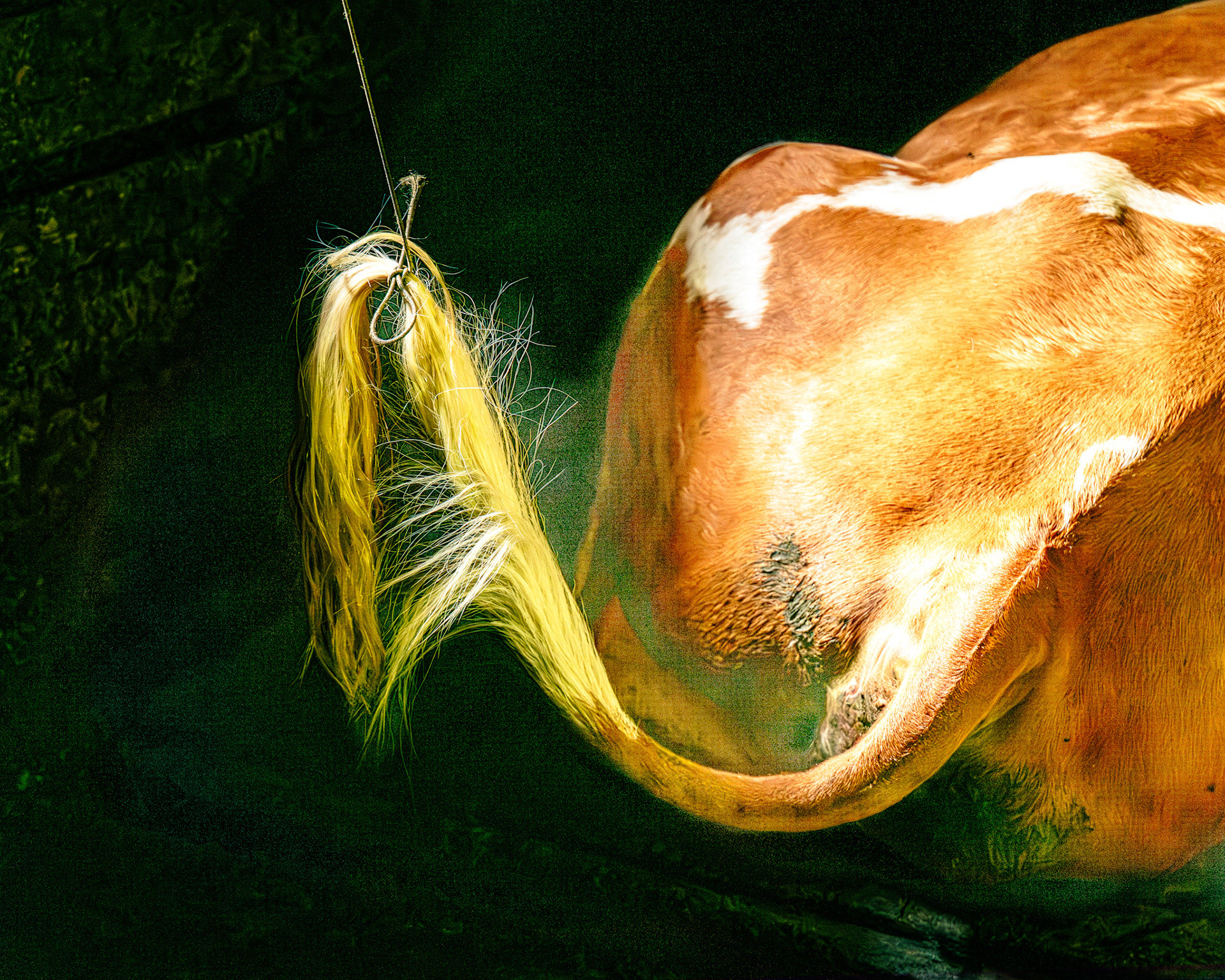For generations, alpine cheese has been produced during the summer on an alp in the rear Lauterbrunnen Valley (Bernese Oberland). Sandrin Feuz, a young alpine herder, continues the alpine farming tradition in accordance with centuries-old traditions.
Each year after the snowmelt, Sandrin moves from the farm in the valley in Stechelberg to the alp. Alongside her are 12 dairy cows, 11 Evolener mother cows (a rare old Swiss breed), 12 goats, a pony, a donkey and a few chickens and, not to forget the beloved shepherd dog "Blue".
To ensure sufficient grass for the animals throughout the summer, the herder repeatedly relocates to different alpine pastures, where the best grasses and herbs thrive. The animals exclusively graze on what grows on these alpine pastures, allowing the cheese crafted from their milk to unfold its natural uniqueness.
Cheese production on the alp still follows the same process as in 1805 when the alpine hut in the Schiirboden was built. Only necessary adjustments to comply with today’s hygiene regulations have been made over time. The herder’s day begins between 4 and 5 o'clock in the morning. The animals are milked and cared for, after which under simple conditions, the cheese is crafted in an old copper kettle over an open fire. Extensive effort is put into thoroughly cleaning all equipment afterward. In the evening, the cows and goats are milked once more. There is always much to do throughout the day too. The daily-produced cheeses are soaked in a salt mixture for two days to give them its typical flavor, then daily rubbed with a secret blend. The animals need care, wood for the fire has to be chopped and fences to be mended. In late summer hay is harvested on the steep slopes (wild haying). The long days end around 10 o'clock in the evening after the hard but fulfilling work.
During the summer, Sandrin produces several goat cheeses, two Bernese Alpine cheeses (AOP) and Ziger daily from the raw milk. In total, over 100 alp cheeses and approximately 300 goat cheeses are amassed. These find their way down to the valley at the end of the alpine period for sale and consumption.
This photobook captures moments from the life of the young alpine herder Sandrin. While these images are current, they provide a glimpse into a long-gone era. Thanks to herders like Sandrin, who dedicatedly uphold old traditions, care for their animals and preserve our alps, we are fortunate to savor these breathtaking landscapes and cheese of extraordinary quality even today.
A big thank you is owed to Sandrin Feuz, who gave us a glimpse into her life as an alpine herder in the rear Lauterbrunnen Valley during the summer of 2023 and shared with us her cheerful and natural manner, letting us participate in her challenging, simple, and yet so happy everyday life on the alp.
The photographs for this book were taken in the summer of 2023 in the rear Lauterbrunnen Valley, in collaboration with the alpine herder Sandrin Feuz and the photographer René Pfluger.
This book is an ode to Sandrin's “Alpziit” (Alp summer).
ISBN 978-3-033-10398-6
at Kindle-Shop under B0CW1CKQXV
Hardcover Book At amazon, click










Additional information
The production process
The milk is collected from the cows in the morning and evening. It is then transported to the cheese dairy, where it is heated and curdled. The curd is then cut into small pieces and heated again. The whey is then drained off, and the curd is pressed into molds. The cheese is then salted and left to age for several months.
The importance of tradition
The production of mountain cheese is a tradition that is deeply rooted in the Lauterbrunnen Valley. It is a way of life for the people who live there. The cheese is a source of pride for the community, and it is a popular product with tourists and locals alike.
The future of mountain cheese
The production of mountain cheese is facing some challenges. The number of cows in the Alps is declining, which is making it difficult to produce enough milk to meet demand. However, there is a growing interest in traditional foods, and this is helping to ensure the future of mountain cheese.
Photo book
The photo book will document the hard work that goes into the production of mountain cheese. It will feature photos of the cows, Sandrin the cheesemakers, and the alpine meadows. The book will also tell the stories of the people who are keeping this tradition alive.
Book "Alptziit" ISBN 978-3-033-10398-6
at Kindle-Shop under B0CW1CKQXV









